Chahar Shanbe Suri | One of the most important things to do in Iran is to check out the calendar for annual festivals. Iran holds and celebrates various events and festivals all year round. Some of the rituals and festivals in Iran consist of religious ceremonies and rites, and many others have more historic and ceremonial backgrounds which can be tracked in to pre-Islamic era. There are also many feasts and celebrations to pay homage to many deities and they are mostly farming festivals. The festivals in Iran vary greatly by region due to Iran’s multi-ethnic make-up. One of the most important and old festivals is Chahrshanbe Suri.
Chaharshanbe Suri – Ancient Persian Festival of fire
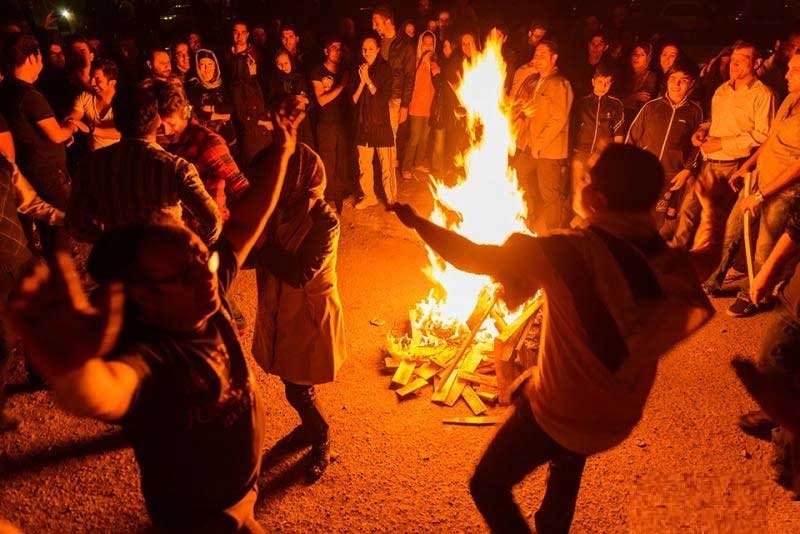
On the last Tuesday of March, the Festival of Fire takes place and sees bonfires sprouting up in various public areas, in alleys, in front of homes and sometimes parks. Chahar-Shanbeh means Wednesday and Suri means both ‘Red’ and ‘Celebration’. In this “red celebration”, people go out and make bush fires and keep them burning till the next morning. This is symbolic of burning all that was bad, pain, unhappiness, sickness and worry and looking forward to a new beginning. People jump over the burning cinders and shout, “Oh, Chahrshanbe Suri; Give me your red color (red face color is the symbol of healthiness) and take back sickly pallor,” which is a purification ritual. Some believe their ancestors’ spirits visit during the last few days of the year. Chaharshanbeh Suri, in many ways is the equivalent of Halloween.
Chaharshanbe Suri is the symbol of good health, cultivation, light, and purity to the Iranian. It is believed that the ritual guarantees the dissipation of the misfortunes and evils, and of course, the materialization of people’s hopes and desires for the next year.
There are several rituals and routines performing in the Chaharshanbe Suri, which make the festival a richer perspective. Some of the most important ones are listed here:
Qaashoq-Zani (Spoon-hitting)
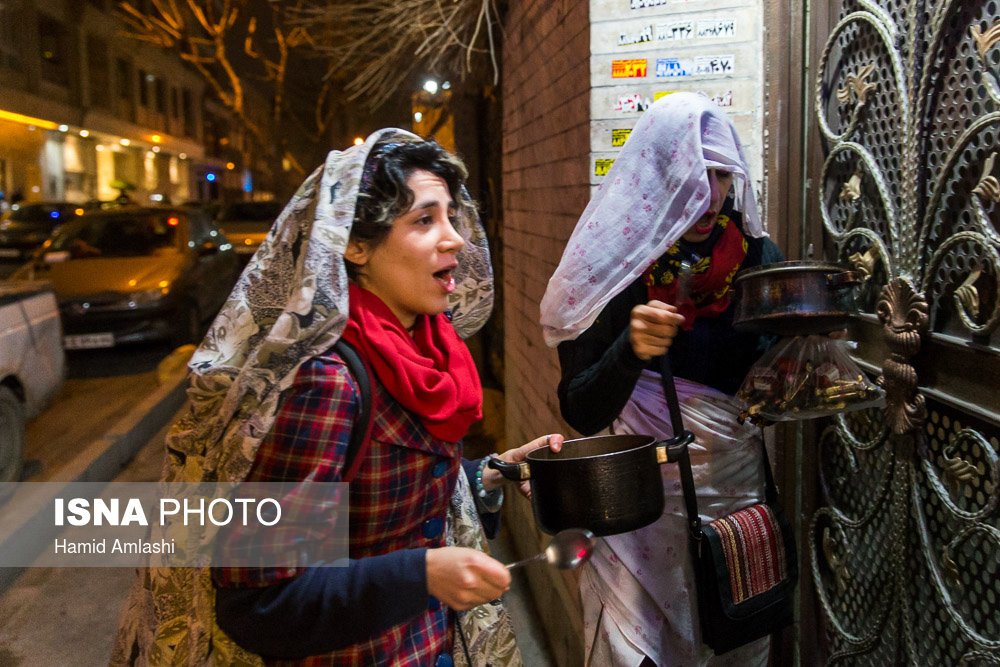
Very much like Halloween and in full disguise(the history of it, is way older than Halloween), usually a veil (chador) covering the entire body, longing youths go to seven different houses and make a noise by hitting a bowl with a spoon to signal the household residing in the house. Being presented, by the household, with some treat betokens a positive omen, and vice versa

Kuze-Shekani (earthenware jar-shattering)
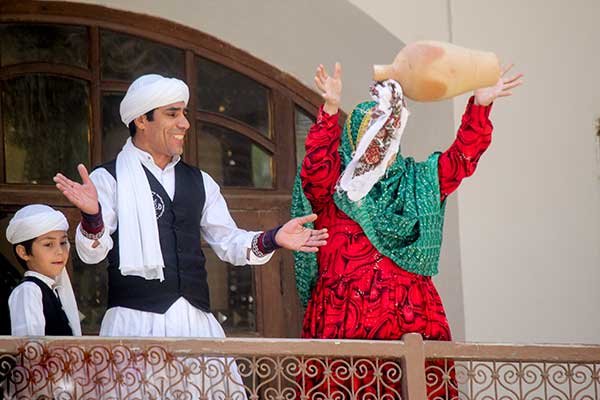
The household put some coal, as the sign of ill omen, and some salt, standing for evil eye, plus a cheap coin, signifying poverty, inside an earthenware jar. They turn the earthenware jar around their heads one by one. Then, one of them throws the jar over the roof onto the alley. Thus, ill omen, evil eye and poverty are driven out of the house.
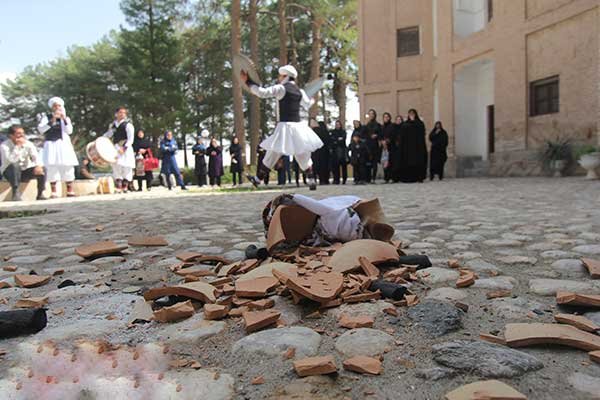
Gereh-Goshaee
Similarly, women yearning to tie the knot or persons who have run into some problem, make a knot at the corner of a handkerchief or some other garment and request the first person whom they come across to undo it. The willingness will signal a hopeful portent.
Shaal-Andazi (shawl-dropping)
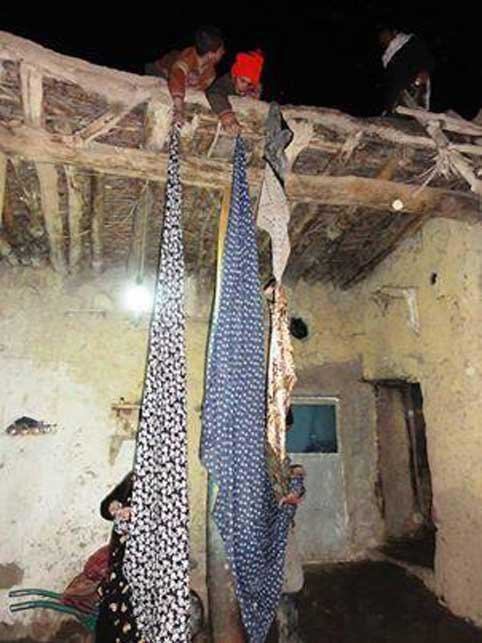
In some parts of the country, young boys, who are engaged, drop a shawl or wraparound down from the roof of their fiancé’s house and she would present him with some confection or other present. Along with these rites, there are also others such as making soup for the sick, discarding the outworn furniture, etc.
Book Your Stay at Hi Tehran Hostel Now
HI Tehran Hostel offers excellent value budget accommodation in a convenient location of Tehran, Dorms from 5 Euros, Privates from 20 + 24/7 Reception. You Are Invited!

Was this article helpful? Share it with your friends!


5 Comments
Prjmarket
Chaharshanbe suri is always held on the last TUESDAY night before the Persian New Year, which is always the Spring equinox. Chaharshanbe does mean Wednesday, but Chaharshanbeh shab means Tuesday, meaning the night before Wednesday.
HI Tehran Hostel
Dear Karen. Exactly. Thanks for your great observation. We truly appreciate it. And since the fire festival was yesterday, we wish you had enjoyed it 🙂
AAL
Τhe article says "On the last Wednesday of December" – which of course is a mistake, that I guess came from the automatic association of December with the end of the year. Of course, the Iranian New Year is in March, and so is Chaharshambe Suri.
HI Tehran Hostel
Dear AAL, thanks for your observation. We truly appreciate it. Done. Edited 🙂
Stremove.com
People would also put food, sweets, flowers, and wine on the roof of their houses and pray for their dead to appease them. This is the origin of the fire festival in Persia before the arrival of Islam and was held in the last five days of the year. But where does Chaharshanbe Suri originate from?